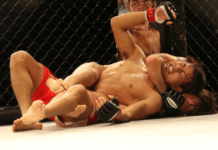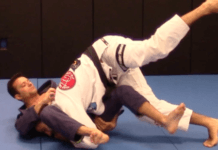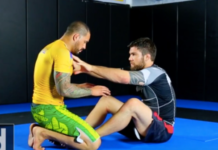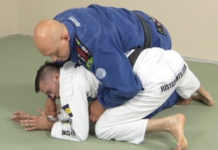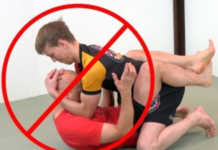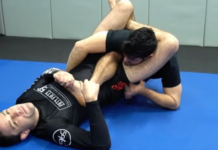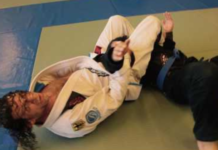One of the most dangerous positions in BJJ is the knee on belly, also known as the knee mount, because of how valuable of a move it is to transition from. You can essentially pin down your opponent, maintain control of the fight and perform any submission hold after you think the opponent has run out of steam. This article will discuss some of the attacks and escapes regarding the knee on belly position so that you are prepared for any eventualities.
Knee on Belly Escapes
Being a victim of the knee on belly move is a serious disadvantage because it is an opening for your opponent to perform a submission like a choke or armbar on you. If that does not happen, the pain from their knee or shin putting pressure on your belly is not exactly favorable for your stamina; here are some escapes that might aid you in breaking free.
Rolling Escape
To perform a rolling escape, turn towards your opponent if they have their knee on your stomach. If it is the left knee, then you need to turn to the left and vice versa. The aim here is to take their base away and opening a way for your arm to loop around your opponent’s thigh. After that hook them with your thigh, move under your opponent and make them lose their balance by lifting the far leg. Strength is not needed if you want to lift your opponent to break free but you would need some flexibility for the placement of your limbs.
Turning In
The next technique to escape from a knee on belly position is to turn towards your opponent as it is a form of side control escape. However, this is also a pretty risky move as your opponent can still make attempts and you have no way to defend yourself. To prevent that, you need to have a strong posture, keep your elbows to your ribs and your hands up to protect yourself from a potential grapple. To commence the escape, force your elbow and hips between yourself and the opponent, bring the bottom leg up and you create enough space to recover from the lock.
50/50 Escape
The 50/50 escape is another move that will require great flexibility. You start by rotating towards the north/south of your opponent with their right knee on your belly. Escaping would require you to push their far knee with your hand and rotating yourself. The idea is to weave your foot from the back and creating a triangle around your opponent with the other leg. If you do not have much flexibility, then you can perform this escape with different angles.
Knee on Belly Attacks
Control from knee on belly is excellent and just a sheer pressure can be enough to make your opponent tap. However, there are a huge amount of attacks from this position than can be used in any occasion. You can enter the position by either amount, hip throw or a guard pass and then perform any transitioning move. Some of the best attacks that can really wear your opponent are:
Triangle Choke
The triangle choke is an ideal counterattack or a transitioning move when performed from the bottom, which makes it a good choice for the knee on belly position. The move is performed by using one arm and the legs to form a triangle around the opponent’s head. This makes the blood flow difficult and as it requires one arm to be performed, you can use the free arm for piling on more pressure, either by strikes or more power for the choke.
Armbar
The armbar is another great attack transition from the knee on belly position as it is one of the most effective submission holds. To perform this move, put your arm around the wrist of the opponent, put one of the legs across their chest, put the other leg’s calf across their face and squeeze your knees tight together. With the opponent’s arm being locked between the legs, you can easily extend their arm, hyperextend their elbow or put more pressure by arching their hips against the elbow.
North-South Kimura
Unlike the normal Kimura, the North-South variation uses your chest to apply pressure from the side mounting position, you can also perform it after the knee on belly position. It involves sitting on the opponent’s head and shoulder then using your legs to pin their free arm or put pressure on their upper body. The position you will be in also provides great control and multiple opportunities for attacks.

